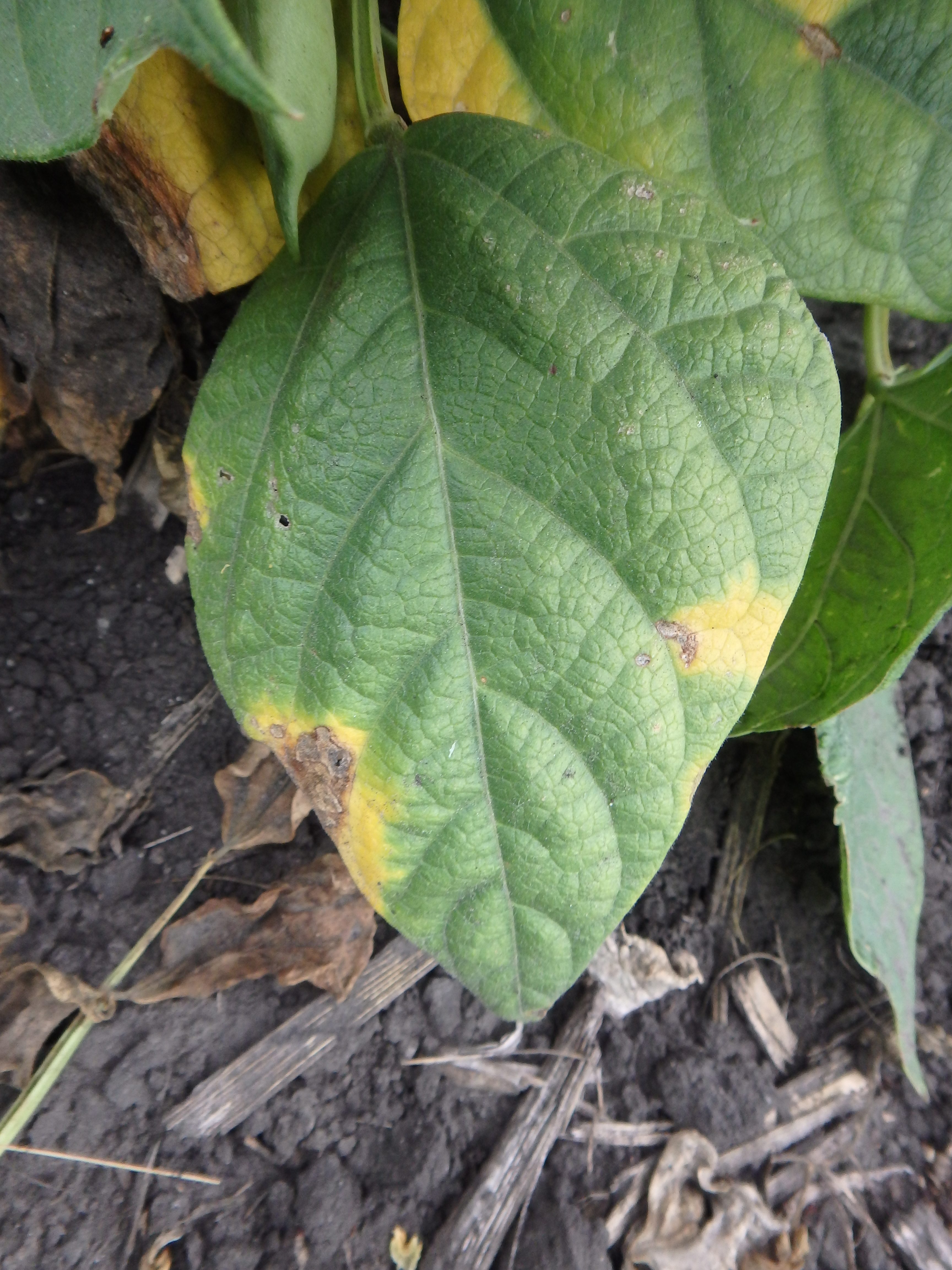Common Bacterial Blight (Xanthomonas campestris)
Infection of common bacterial blight (CBB) occurs through natural leaf openings or wounds created by hail or other environmental damage. It first appears as water-soaked spots on the underside of leaflets. Lesions eventually coalesce and become necrotic, surrounded by a yellow halo. Pod symptoms include circular, water-soaked spots with yellow masses of bacteria in the centre. These pod lesions eventually become reddish brown, sunken lesions that resemble anthracnose lesions. Infection of the pods can cause shriveled seeds. This disease can spread rapidly from plant to plant, favouring warm temperatures and humid conditions.
The best way to manage bacterial blight is by planting disease-free seed, keeping equipment clean and incorporating residue. As this disease is bacterial, foliar fungicide will not be effective for control. A copper-based product called Kocide 2000 is registered for control of CBB. However, effectiveness of this product has been reported to be variable.
Additional Resources
Dry Edible Bean Disease Diagnostic Series – North Dakota State University
Dry Bean Disease Management – Saskatchewan Pulse Growers

